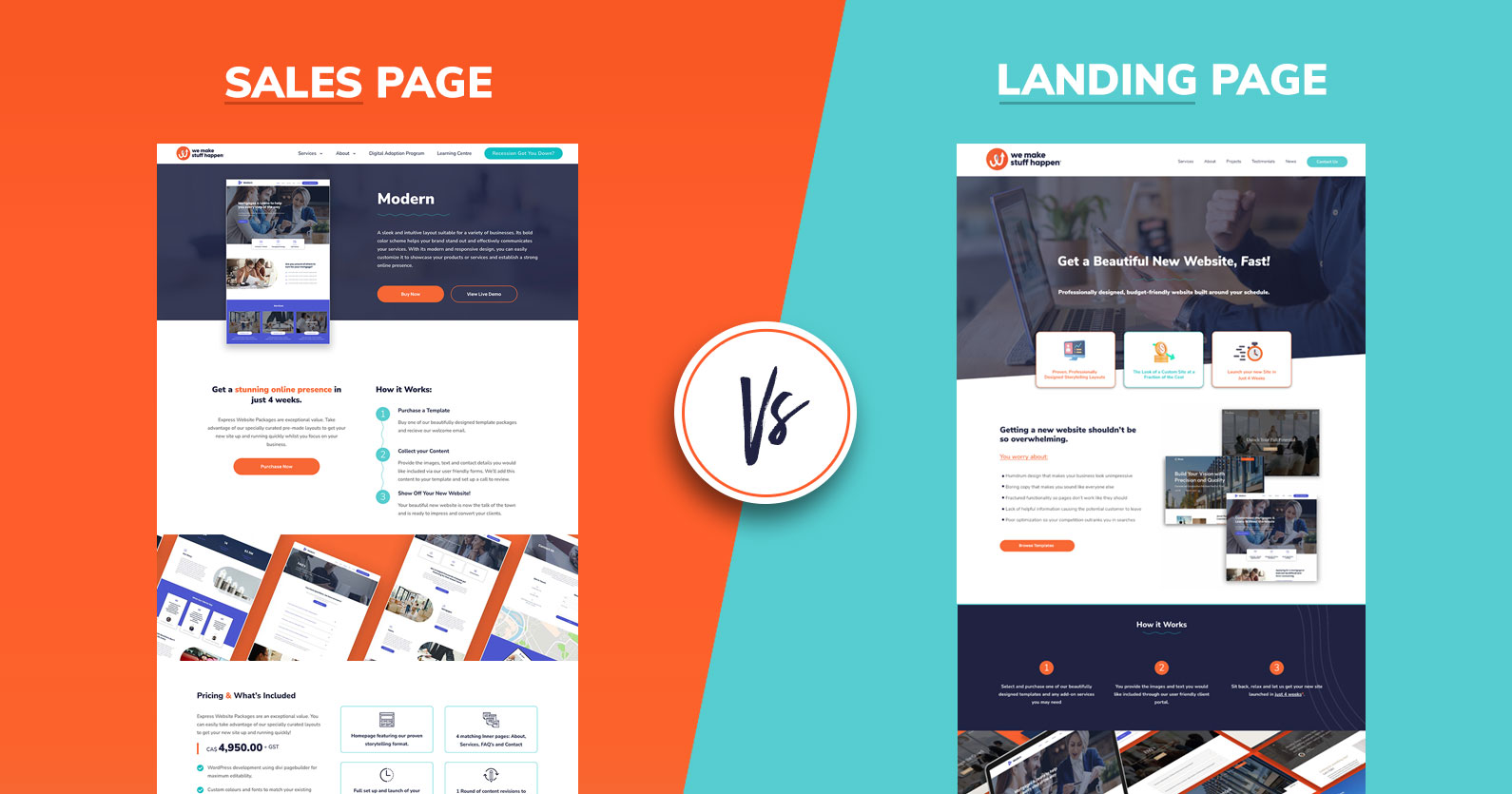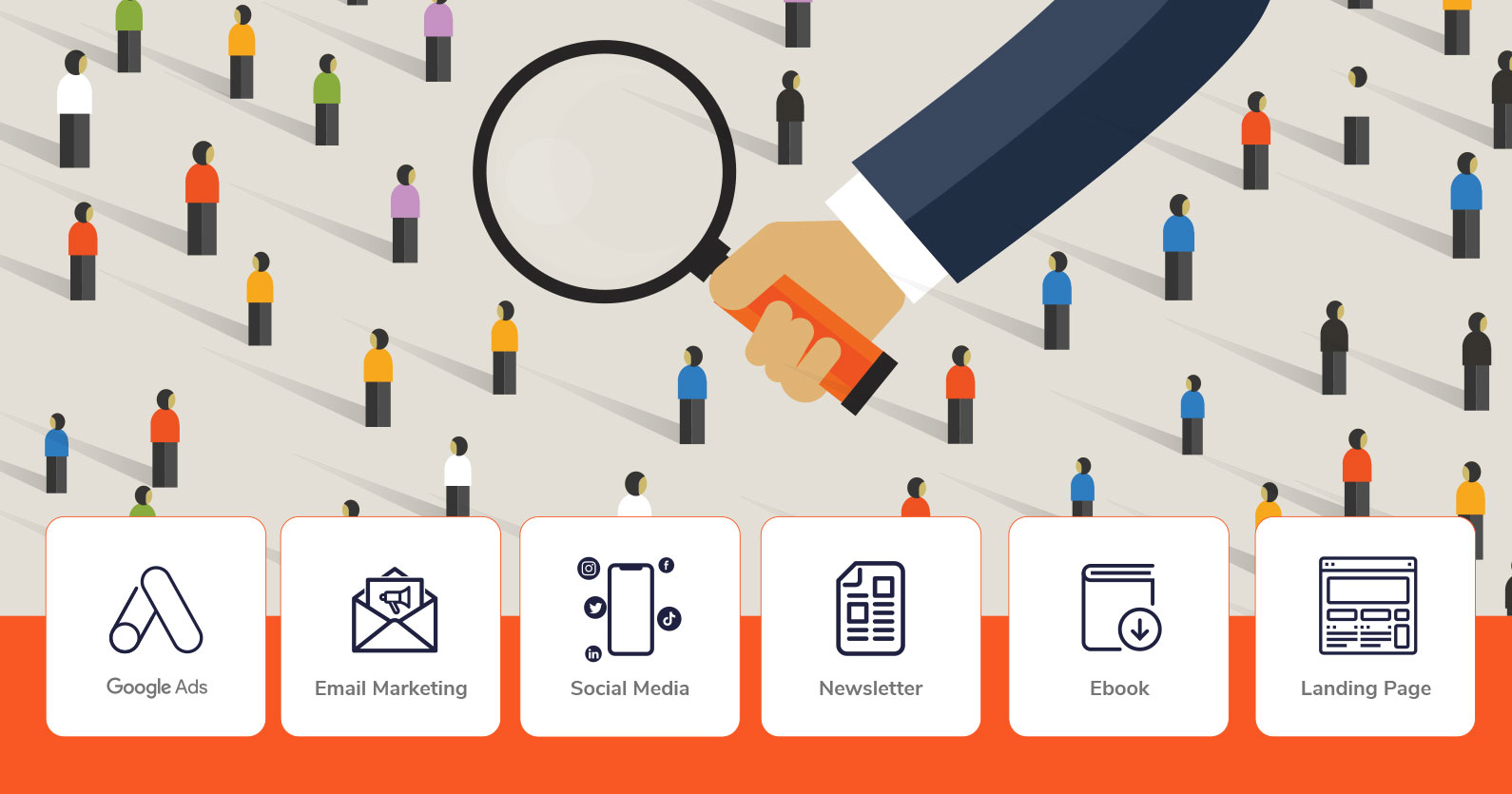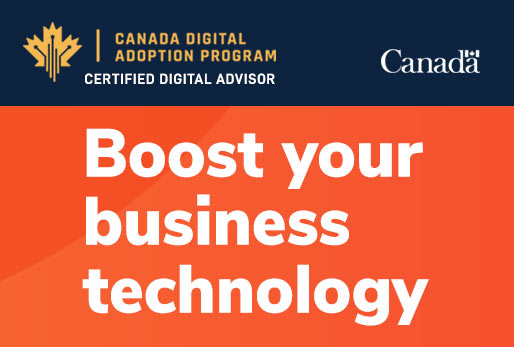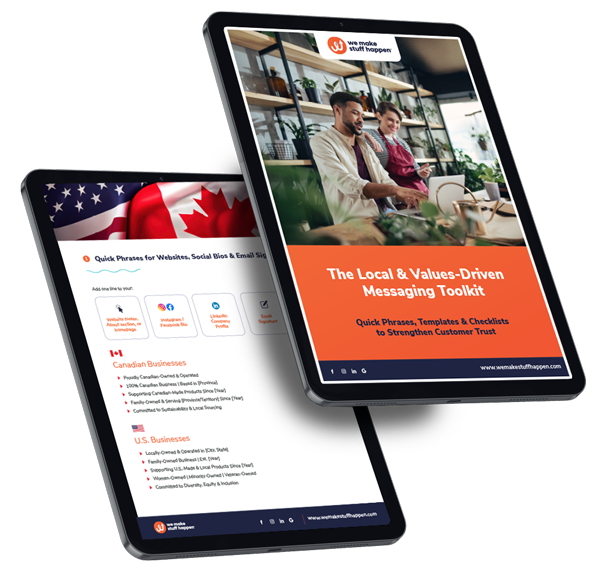Why You Need to Know The Difference Between a Landing Page and a Sales Page

When designing or updating your website, you may wonder whether you need a landing page or a sales page. You’ve heard both terms, but maybe you weren’t sure of the difference between a landing page and a sales page. Or, like many people, you assumed they were interchangeable! It turns out that they’re not the same, and there are many differences between a landing page and a sales page.
But does it really matter whether you use a landing page or a sales page? The short answer is: yes. The long answer is: absolutely yes! Reviewing your needs and goals for the pages on your website will help you determine which you need. So what is the difference between a landing page and a sales page?
Basically, a landing page is a specialized web page with the sole purpose of capturing visitors’ attention and guiding them toward a specific action. Landing pages convert visitors into leads or prospects by convincing them to engage in an action, such as signing up for an email newsletter. And a sales page takes those leads and guides them to make a purchase!
Of course, there are other factors to consider when comparing the difference between a landing page and a sales page. Knowing the difference between the two is vital when you’re working with a website developer. Aside from looking fabulously smart, you’ll be able to better communicate your needs to your developer and save yourself some time and money!

Purpose
There is a pretty big difference between a landing page and a sales page when you think about the purpose of each page. A landing page is like a specialized web page that has one important mission. Its goal is to grab your attention and guide you toward taking a specific action. Whether it’s signing up for a newsletter, downloading an awesome ebook, or filling out a contact form, a landing page wants to turn a website visitor into a lead or prospect.
Unlike your regular web pages that have a bunch of information and links scattered around, landing pages are all about conversions. They want to nudge your visitor in the right direction and get them to do something that aligns with the business’s objectives.
Now, here’s where the magic happens. Landing pages can have different purposes depending on what the business is aiming for. They can:
- collect contact information.
- entice your audience with a fantastic newsletter that they simply can’t resist.
- offer up an amazing ebook to download.
A sales page is a true sales powerhouse designed to convince visitors to make a purchase. Its mission is clear: showcase a product or service in a way that’s so compelling people can’t resist hitting that “Buy Now” button!
The main objective of a sales page is to generate direct sales by presenting the product or service in the most persuasive way possible. It combines captivating visuals and compelling copy to entice potential customers to take the desired action of making a purchase. It’s important to note that sales pages are not limited to physical product sales; they are used across various industries to sell products, services, courses, ebooks, and much more.
When considering whether you need a landing page or a sales page, remember to consider the purpose of the page. If you want to collect an email address for your client, you use a landing page. To sell them an item or service, use a sales page!

Content
When you’re preparing content for your page, one size does not fit all. The difference between a landing page and sales content is pretty significant. For your landing page, you want your client to arrive, perform the specific action on the page, and move on. A sales page is a lot more involved – you want your customer to get the details they need to make an informed decision (obviously to purchase from you!) and check out your other offerings.
A landing page is like a magnet strategically designed to attract and guide visitors toward a specific action. This action, often called a call-to-action (CTA), is the ultimate goal of a landing page. By keeping things focused and concise, this page avoids overwhelming visitors with an avalanche of information. Instead, it presents a single irresistible offer or CTA front and center, grabbing their attention and increasing the chances of them taking the desired action. It’s all about cutting through the noise and guiding visitors toward a clear destination.
The thing that makes a landing page work is the emphasis on value and benefits. A successful landing page showcases the incredible value and benefits the visitors stand to gain. By cleverly highlighting what’s in it for them, the landing page convinces visitors that taking that desired action will be a game-changer, a decision well worth their time and effort.
The difference between a landing page and a sales page is that it takes on a different mission in the area of content. Where a landing page is focused on convincing your customer to respond to a CTA, your sales page is a treasure trove of information. Potential customers come to feast their eyes on a detailed description of a product or service, and a sales page provides every essential detail a customer needs to make an informed purchasing decision.
On a sales page, it’s all about the features, benefits, and unique selling points. Sure, it’s important to showcase what the product or service has to offer, but the real magic happens when you explain how these features directly benefit the customer: the unique selling points that set the offering apart from the competition. A sales page also addresses concerns head-on, providing reassurance and building trust. Testimonials and social proof from delighted customers are great ways to do this.
So, your content is determined by the way you’ll use the page. Keep it simple for a landing page, and make it more engaging and involved on a sales page.

Design and Structure
We know websites are all about design, so flashy images and great videos should be enough, right? Not quite. Those are a great start, but another major difference between a landing page and a sales page lies in the design and structure of the pages.
A landing page is clean and focused, ensuring visitors’ attention remains fixated on the main offer or call-to-action (CTA). By eliminating unnecessary elements like excessive links and navigation menus, this page creates a streamlined user experience that effortlessly guides visitors toward that ultimate goal: conversion.
Each element is strategically placed to entice visitors to respond to the CTA. The headline, key information, and CTA take the spotlight. And their positions on the page ensure they capture the attention of even the most skeptical eyes.
The design of a sales page is more like a story. Sections flow from one to another and provide all the information a customer needs to make an informed decision. Features, benefits, pricing, testimonials, and frequently asked questions equip potential customers with all the knowledge they need to purchase confidently.
High-quality images and videos showcase the product’s benefits and allow visitors to envision themselves as proud owners. Including well-written, persuasive copywriting alongside testimonials, reviews, and social proof creates trust and credibility.
By designing your page to match the intent behind it, your customers will know just what to do when they arrive!

Traffic Sources
So, how do your clients find your website? Well, that depends. The route potential customers take is another key difference between a landing page and a sales page. The reason people land on one page or the other is based on where and how they started looking for you.
Your landing page is like a magnet that attracts targeted traffic from specific sources. Businesses strategically create ads on platforms like Google Ads or social media networks, honing in on specific demographics or keywords that match their target audience.
Social media plays its part too. Engaging posts and sponsored content on platforms like Facebook, Instagram, or LinkedIn entice users to click and explore the offer presented on the landing page.
And let’s not forget how powerful email marketing is. Targeted emails reach existing subscribers or segmented lists, tempting recipients with an offer and providing a direct link to the landing page. It’s all about driving traffic with purpose!
Conversely, a sales page is a gathering place for visitors who have already shown interest or progressed through the sales funnel. But where do they come from? Visitors who have interacted with a landing page, such as signing up for a newsletter or downloading an ebook, may take the next step on their conversion journey and find themselves on a sales page. Here, they dive deeper into the details, gaining more in-depth information to help them make informed decisions.
Visitors may also arrive directly on a sales page from a product listing or category page on an e-commerce website. These visitors already have their eyes on the prize and are just a step away from making a purchase decision.
And marketing emails play a role too. Companies strategically include links to sales pages in their emails, nurturing leads or presenting irresistible offers to existing customers.
Of course, there are always search engines! When users are on the hunt for specific products or services, sales pages that are optimized for search engines can pop up in the search results.
Despite the many differences between a landing page and a sales page, the two pages work together to create a fluid sales process that starts with a visit to your website and ends with a sale. Knowing the difference between a landing page and a sales page is a great way to make sure you’re able to communicate with your website developer to make sure you have the exact pages you need.
If you’re looking for a new website, or if you need new landing pages or sales pages, schedule a call to learn more!
Jumpstart Your Digital Marketing BOOK A COFFEE
BOOK A COFFEE 








